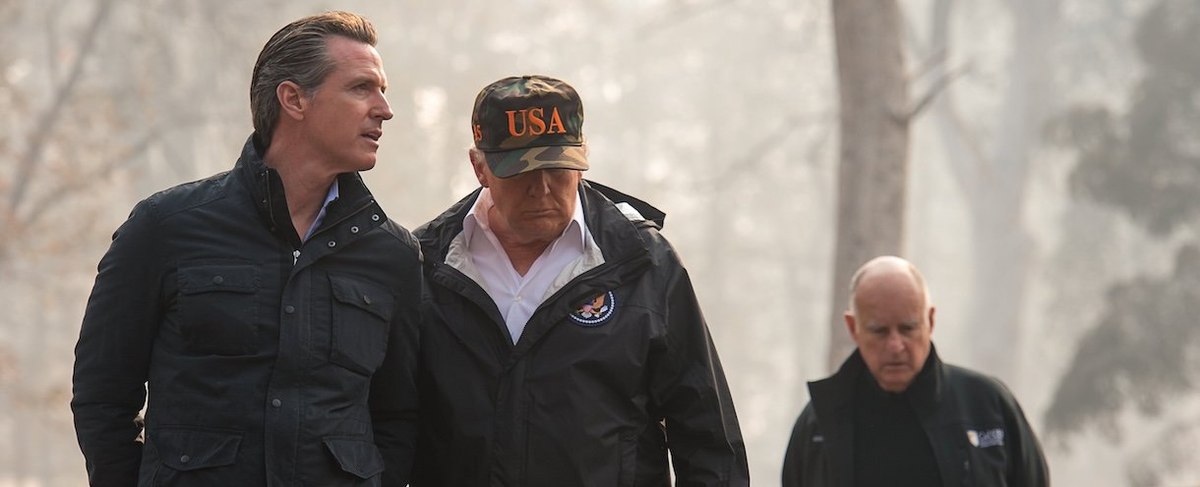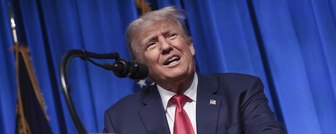In the past two months, American politics has seen a new development on social media: a tonal shift from California governor and potential 2028 presidential candidate Gavin Newsom. News outlets have said that Newsom has become a social media troll and suggested the new persona is either a parody or an emulation of Donald Trump (or some combination of the two).
Trump's use of social media has long been the subject of public debate. His social media accounts have had large reach and influence. But criticism of his social media style predates his first major presidential election campaign in 2015. YouGov polling early in his first term found that most Americans viewed his use of Twitter as inappropriate, though he was more likely to be seen as expressing his beliefs than saying what people want to hear. Later in his first term, YouGov polling found that majorities of Americans believed Trump tweeted too often and supported social media companies moderating his posts.
A September YouGov poll finds that most Americans view Trump's use of social media negatively. Half of Americans say he posts too much and an equal share say his posts are inappropriate. Evaluations of Newsom's social media use are less negative: Roughly equal shares of Americans express positive and negative opinions about his social media. Views of each political leader's social media are similar to attitudes about them more broadly. Half of Americans say Trump does not focus on the more important issues; less say so of Newsom. Americans are also more likely to say that Trump is a weak leader than to say that Newsom is.
But Trump's social media has a broader reach than Newsom's. Americans see and interact with Trump's posts more often than Newsom's and more Americans follow Trump on social media than follow Newsom. More Americans express uncertainty about Newsom's social media and about his leadership than are unsure about Trump's.
Americans are more negative about Trump's social media than about Newsom's
Half of Americans (50%) say that Trump's social media posts are usually or always inappropriate. Only 30% say they are usually or always appropriate. In contrast, Americans are more likely to say that Newsom's posts are appropriate than to say they are inappropriate (32% vs. 24%). However, nearly half (45%) say they are not sure whether Newsom's posts are appropriate or inappropriate.
Similarly, half (51%) of Americans say Trump posts on social media too often. Only 23% say he posts the right amount and 3% say he does not post often enough. Americans are much less likely to say Newsom posts too often (20%), but they're not significantly more likely to say he posts the right amount (24%) or not enough (5%). Half (51%) of Americans say they're not sure what they think about how often Newsom posts.
These patterns are consistent with more Americans expressing negative views of Trump's social media than of Newsom's. Half (49%) of Americans have a negative opinion of the content posted on social media by Trump, while only 29% say the same about Newsom. However, roughly equal shares of Americans have positive views of Trump's and Newsom's social media (28% vs. 29%). Newsom's social media strategy hasn't attracted nearly as many haters as Trump's, but it also hasn't attracted more fans.
More Americans have negative views of Trump than of Newsom
Only one-third (35%) of Americans say that Trump spends most of his time focused on the most important problems. Half (50%) say he mostly focuses on less important problems. Opinions of Newsom are evenly split: 32% say he mostly focuses on the most important issues and 32% say he mostly focuses on less important issues. 37% of Americans are not sure about Newsom's priorities, much larger than the 14% who are unsure about Trump's.
Opinion is more divided about whether Trump and Newsom are strong or weak leaders. Americans are slightly more likely to say that Trump is a somewhat or very weak leader than to say he is a somewhat or very strong one (47% vs. 45%). On the other hand, Americans are slightly more likely to view Newsom as strong than as weak (35% weak vs. 39% strong). As with other evaluations, more Americans are not sure about Newsom's leadership than are unsure about Trump's (27% vs. 9%).
Trump and Newsom are each more likely to be viewed unfavorably by Americans than they are to be viewed favorably. However, unfavorable opinions of Trump are much more widespread than unfavorable opinions of Newsom. A majority (58%) of Americans have a somewhat or strongly unfavorable opinion of Trump, while only 39% have a somewhat or strongly favorable opinion. In contrast, opinions of Newsom are closer to evenly split: 42% of Americans view him unfavorably and 36% view him favorably.
There is a significant gender divide on opinions of Trump and Newsom. Men's net favorability of both Newsom and Trump are negative. That means that more men have an unfavorable opinion than a favorable opinion of each leader: net favorability is the percentage with a favorable opinion minus the percentage with an unfavorable opinion. Newsom's net favorability among men is slightly more negative than Trump's. On the other hand, Trump's net favorability among women is negative but Newsom's is positive.
Differences by age are less striking. Within each age group, net favorability of both Trump and Newsom are negative. There is a particularly large gap in opinion of the two among younger Americans. Among adults under 30, Trump's net favorability is −30, while Newsom's is essentially 0, meaning roughly equal shares of young adults view Newsom favorably and unfavorably. The Trump-Newsom gap is much smaller among older Americans.
Partisan views match Trump's and Newsom's parties. Democrats overwhelmingly view Trump unfavorably and Newsom favorably. Republicans overwhelmingly view Trump favorably and Newsom unfavorably. Net favorability of both Trump and Newsom among Independents is negative, although Trump's net favorability is significantly lower than Newsom's (−35 vs. −20).
Trump's social media has a wider reach than Newsom's
Despite Newsom's effort to emulate some of Trump's social media style, Americans say they are exposed to Trump's social media more often than Newsom's. A majority (57%) of Americans say they see content posted by Trump on social media sometimes or often; 40% say they rarely or never see his content. In contrast, only 39% say they see content posted by Newsom sometimes or often; about half (52%) say they never see Newsom's posts.
Democrats are slightly more likely to say they see Newsom's social media content sometimes or often than to say this of Trump's content (57% vs. 52%). But Independents and Republicans see Trump's content much more often than Newsom's. Majorities of Independents (61%) and Republicans (56%) say they rarely or never see Newsom's posts. In contrast, only 40% of Independents and 33% of Republicans rarely or never see Trump's posts.
Within each age group, Americans see Trump's social media content more often than Newsom's. Though some analysts have suggested that Newsom's social media strategy could help him reach younger voters, adults under 30 see Trump's posts much more often than Newsom's. Americans 65 and older see Newsom's posts more often than those in any other age group. Trump's posts are seen more evenly across age groups.
While considerable shares of the American population see Trump and Newsom's social media content, far fewer interact with their posts. Majorities of Americans never like, comment on, or share content posted on social media by Trump (65%) or Newsom (68%). Only 21% of Americans interact with Trump's content sometimes or often, and only 17% do so with Newsom's content. Within each age group, majorities of Americans never interact with posts from either Trump or Newsom.
Republicans and Democrats are more likely to interact with posts from Trump and Newsom, respectively, but this still represents a minority of each party. 39% of Republicans interact with content posted by Trump sometimes or often; 60% rarely or never interact with his posts. Only 33% of Democrats interact with Newsom's posts sometimes or often, while 64% rarely or never interact with them. Majorities of Independents never interact with posts from Trump (69%) and Newsom (72%).
Even smaller shares of Americans choose to follow Trump and Newsom on social media. Only 18% of Americans say they follow Trump on at least one social media platform and 11% say they follow Newsom. Even within their own parties, each leader's social media followers are in the minority. 39% of Republicans say they follow Trump on social media while 57% say they do not. Newsom's following among Democrats is even smaller: 20% say they follow him while 74% say they do not.
Half of Americans say politicians shouldn't make fun of opponents on social media
One major hurdle for Trump and Newsom's trollish personas: Many Americans don't think such behavior is acceptable. Half (50%) of Americans say it is mostly or completely unacceptable for a politician to make fun of their opponents. Only one-third (35%) say it is mostly or completely acceptable.
Americans of all party identifications, genders, and age groups are more likely to say that it is unacceptable for a politician to make fun of their opponents than to say it is acceptable. Republicans (41%), men (43%), and Americans 65 and older (41%) are more likely to say making fun of opponents is acceptable. Democrats (54%), women (55%), and 45- to 64-year-olds (59%) are most likely to say it is unacceptable.
— Taylor Orth and Carl Bialik contributed to this article
See the results for this YouGov survey
Related articles and surveys:
- About half of Americans think Donald Trump would accept a bribe if offered one
- Who do Democrats and Republicans want as their 2028 presidential nominees?
- After Texas legislators passed redistricting bill, support rises for Democratic counter-gerrymandering
- How Americans compare Florida, California, and their governors
- Americans want President Trump subject to the same social media rules as everyone else
- How Americans feel about Donald Trump’s racist tweet attacking Democratic congresswomen
- All the President's Tweets
- Trump's social media style isn't a hit with the general public
Methodology: This YouGov poll was conducted online on September 4 - 8, 2025 among 1,135 U.S. adult citizens. Respondents were selected from YouGov’s opt-in panel to be representative of adult U.S. citizens. The sample was weighted according to gender, age, race, education, 2024 presidential vote, 2020 election turnout and presidential vote, baseline party identification, and current voter registration status. Demographic weighting targets come from the 2019 American Community Survey. 2024 presidential vote, at time of weighting, was estimated to be 48% Harris and 50% Trump. Baseline party identification is the respondent’s most recent answer given around November 8, 2024, and is weighted to the estimated distribution at that time (31% Democratic, 32% Republican). The margin of error for the overall sample is approximately 4%.
Image: Getty (Pool / Pool)
What do you really think about President Trump, American politics in general, and everything else? Share your reality, join the YouGov panel, and get paid to share your thoughts. Sign up here.








